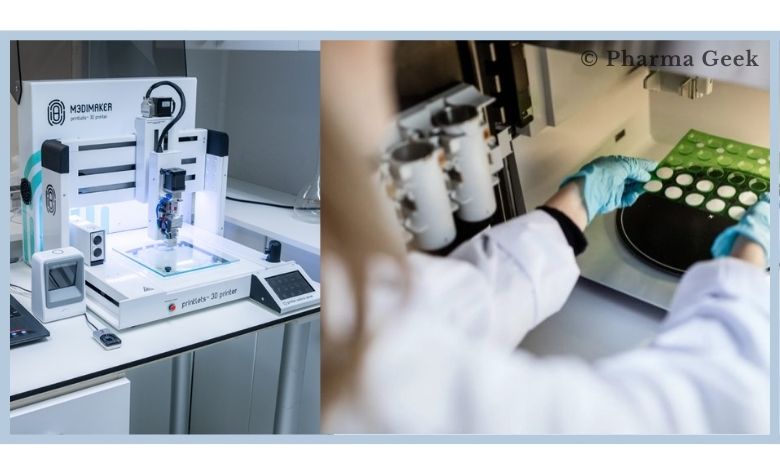Medicine demand is soaring worldwide however the production is yet to come at par with the global demand. As the pharmaceutical sector reels under the pressure of accelerating production, several leading pharma brands and research institutes are turning to 3D printing for a potential solution.
Alvaro Goyanes and his team from the University College London are researching on a 3D printing method of manufacturing, which could reduce time consumed to produce certain medicines down to a few seconds from three to four minutes. Goyanes predicts that eventually he can bring the time taken to produce medicines down to a second.
The method that the team has employed is called vat photopolymerisation. This involves printing the entire tablet at one go. Contrary to this, printing approaches in use currently produce different components of a tablet separately.
Besides offering innovation, the team also considered the price point of the technology. Goyanes has recently said that the printers he and his team developed will cost roughly the same as other equipment currently in use in the pharmaceutical sector. This means that the cost of the printers will not be a deterrent, inhibiting the deployment of the novel technology.
Beyond the advantage of massively improving the production rate, 3D printing also will allow to tailor medicines as per the requirements of patients. This could be a major breakthrough as the technology holds the potential of either eliminating or significantly reducing the risk of unpleasant side effects caused in patients due to high or low dosage of required drugs.
As per reports, the team already has successfully accomplished a creating of proof-of-concept of warfarin, a blood thinning drug, in a way that will allow releases doses at a tunable rate. The global pharmaceutical industry already has identified the potential of 3D printing. Clinical trials are already underway to test various 3D printed medicines.
- Disposable Endoscopes Market Growing Demand and Insights 2030 - November 10, 2022
- Corporate Wellness Market US$ 96.15 Bn of Potential Opportunity Is Opening - November 10, 2022
- Active Pharmaceutical Ingredients Market Size Will Attain USD 356 Bn By 2030 - November 9, 2022

